| Title | Pages |
|---|---|
| Magnetic Nanoparticles and Their Biomedical Applications The combination of magnetism and nanotechnology has presented promising materials: magnetic nanoparticles. These materials have been getting more attention due to their “size‐dependent functionality”. There is a critical size for nanoparticles that their properties change. Materials with various functions can be synthesized with the desired properties since a wide range of polymers including natural and synthetic polymers can be utilized in the production of the magnetic nanoparticles. Furthermore, they can be more selective and specific with the conjugation target‐specific ligands. This structural and functional diversity enables these materials to be used in a wide range of areas. In this review, we discuss the main components of the magnetic nanoparticles and their examples in biomedical applications. They can be used as contrast agents in magnetic resonance imaging; delivery systems in the controlled release of therapeutic agents; supporting materials for separation, isolation, and purification of biomolecules. They can be also functioned in hyperthermia and magnetofection for gene therapy. However, even though their increasing research interest, magnetic nanoparticles still need to be improved to be more popular in the commercial area. We hope that these functional materials will present promising possibilities in nanotechnology and biomedicine in near future. 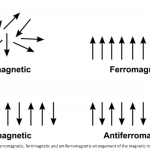
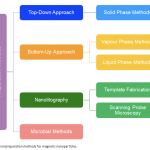
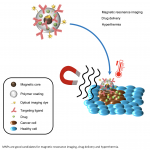
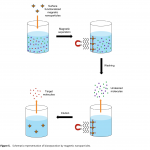
|
143 - 152 |
| Novel Methyl 4,6-O-Benzylidene-ɑ-D-Glucopyranoside Derivatives: Synthesis, Structural Characterization and Evaluation of Antibacterial Activities Carbohydrates are the most abundant and the most diverse biopolymers in nature. Due to the importance of carbohydrates it is necessary to develop a new method for the synthesis of carbohydrate based drugs of the current global situation for health and disease. In this present work we demonstrate the synthesis of methyl 4,6-O-benzylidene-ɑ-D-glucopyranoside derivatives by direct acylation method. The structures of the newly prepared compounds have been characterized and elucidated using various physico-chemical and spectroscopic methods including elemental analysis, melting point determination, infrared and proton NMR spectroscopy. A number of acyl derivatives were prepared in order to obtain a series of newer components for antibacterial screening experiments. These acylated derivatives were evaluated for in vitro antibacterial screening studies against four human pathogenic bacteria by disc diffusion method. 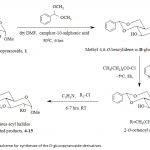
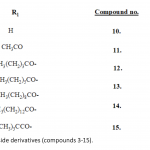
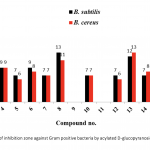
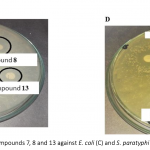
|
153 - 164 |
| Neuroprotective Effect, Antimicrobial and Antioxidant Potentials of Sumac (Rhus coriaria L.) Fruit Extracts Introduction: Rhus coriaria L. (sumac) is a traditional edible-plant in the Anatolia. The leaves and fruits of sumac have been extensively used in folk medicine and alternative therapeutic approaches, because of the presence of many bioactive phytochemicals. Material and Methods: In this study, we aimed to investigate in vitro neuroprotective, antimicrobial and antioxidant properties of sumac extracts that were extracted with water, methanol, n-hexane, and dichloromethane. Results and Discussion: According to research results, almost all the tested extracts of sumac remarkable biological activities in a time and dose-dependent manner. Among the extracts, aqueous and methanolic extracts were demonstrated the highest cholinesterase inhibitory activity on both AChE and BChE enzymes, values ranging from 16.16±0.18 to 41.08±0.02% at 200μg/mL concentration. Regarding of MIC assay, all the extracts exhibited more growth-inhibitory effects against gram- negative bacteria strains than gram-positive bacteria strain, and MIC values in range of 3.9-62.5 μg/mL. In terms of DPPH radical scavenging activity, all the tested extracts demonstrated significant antioxidant capacity, methanol extract of sumac seemed to possess stronger scavenging activity (56.11±1.08% at 100 μg/mL concentration) than the other extracts. Conclusion: These findings provide contributions to medicinal uses of sumac in nervous system disorders and microbial diseases as alternative therapeutic agents, along with traditional uses of sumac. 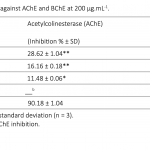
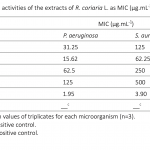
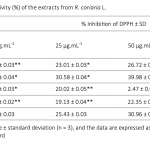
|
165 - 170 |
| Determination of Hair and Serum Metal Levels in Petrol Station Workers The aim of this study is to determine some metals in hair and serum samples of petrol station workers. A total of 50 petrol station workers (exposure group) and 50 office workers (control group) were included in the study. Li, Ni, V, Tl, Ti and Sr levels in hair samples and Sr, Ti and V levels in serum samples were measured using the ICP-OES instrument. Li, Ni, V, Tl, Ti and Sr levels in hair samples were found to be significantly higher in the exposure group than in the control group. Ti level in serum samples was found to be significantly higher in the exposure group than in the control group. However, Sr and V levels in serum samples did not differ significantly between the two groups. These results show that petrol station workers are exposed to these toxic metals. For this reason, it may be recommended that petrol station workers should undergo regular biomonitoring and healthcare screening. 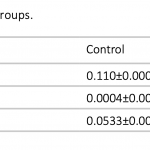
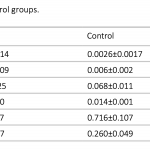
|
171 - 176 |
| Naproxen Derivative Interaction Properties with ct-DNA Interaction mode of a naproxen derivative (NH) with ct-DNA was explored by absorption and fluorescence spectroscopy. The experimental results revealed the static quenching as a result of groove binding between the naproxen derivative and ct-DNA. Computational studies were carried out to a deeper understanding of the interactions. Molecular docking calculations showed that the interaction between NH and ct-DNA is resulted by groove binding. In addition to spectral data, docking studies revealed that NH-A_DNA and NH-B_DNA complexes had different interaction and conformational trends to each DNA isomer. 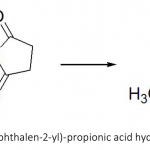
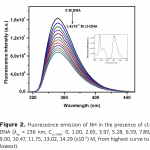
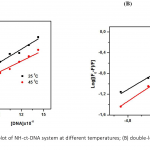

|
177 - 184 |
| Astragalus trojanus Stev. Batch Cultures: Cycloartane-type Metabolite Accumulation in Response to pH, Sucrose and Casein Hydrolysate In this study, two grams of callus regenerated from stem and leaf explants of Astragalus trojanus Stev. were cultured in Woody Plant Medium (WPM) supplemented with 1 mg/L 2,4-D for four weeks and used as inoculum in order to investigate the effects of working volume and media composition. The highest biomass was obtained in 250 mL flask with astragaloside IV (1.66 μg/mg) and cycloastragenol (0.19 μg/mg) accumulation. Different concentrations of sucrose and casein hydrolysate (1 and 2 g/L) were also tested and the effect of pH was also investigated. Biomass accumulation cannot be enhanced, however, astragaloside IV and cycloastragenol content was ascended. The highest astragaloside IV (95.23 μg/mg) and cycloastragenol (5.93 mg/mg) accumulations were obtained at pH 6.8 and 2 g/L casein hydrolysate, respectively. 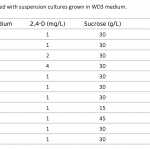
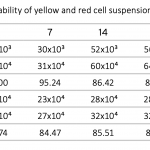

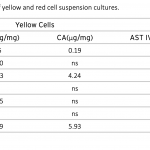
|
185 - 192 |
| Decolorization of Reactive Blue 19 Dye by Bacillus megaterium Isolated from Soil The principle aim of this study was to decolorize Reactive Blue 19 dye with Bacillus megaterium (B. megaterium) and to determine the effect of some parameters such as pH, temperature, initial dye concentration, nitrogen and carbon sources on decolorization. With this purpose, a new isolate identified as B. megaterium by genotypic (16S rRNA sequence) characterization, was found effective on Reactive Blue 19 decolorization. Glucose (20g/L) was found as the most suitable carbon source for Reactive Blue 19 decolorization with a yield of 92%. When the effect of nitrogen sources on decolorization was investigated, the highest dye removal rate was found as 91% which was obtained in shake flask containing yeast extract (10 g/L). In trials determining pH effect on dye removal; it was found that B. megaterium enables decolorization of Reactive Blue 19 at neutral pHs with a high percentage of 91%. P values were calculated for all parameters and found as p<0.05. Results of FTIR analysis showed that decolorization of Reactive Blue 19 by B. megaterium occurred via biodegradation. When chemical and physical wastewater treatment methods were compared to the biological methods, usage of microbial sources such as B. megaterium is considered as an efficient and economical alternative. 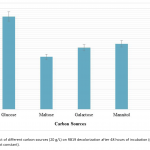
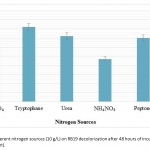
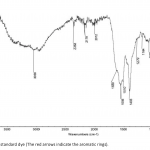
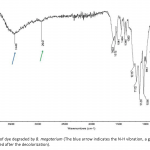
|
193 - 201 |
| Investigation of Reaction of Some Ester Ethoxycarbonyl Hydrazones with 1-Adamantyl Amine In this study, the reactions of the 1-adamantyl amine with 4 different ester ethoxycarbonyl hydrazone derivatives were studied. At first, iminoester hydrochloride derivatives were synthesized according to the Pinner method. Then they were reacted with ethyl carbazate to synthesize ester ethoxycarbonyl hydrazone derivative compounds. In the last step, 3-substituted-4-adamantyl-1,2,4-triazol-5-one derivatives were aimed to synthesize, the ester ethoxycarbonyl hydrazone compounds were heated in an oil bath dry to dry with 1-adamantyl amine. It has been observed, however, that the ring is not closed according to IR and 1H-NMR analysis and the ethyl N-(adamantylcarbamoyl)alkylcarbohydrazonoate derivative compounds were synthesized as stabile and original compounds. The structures of the synthesized compounds were elucidated by spectroscopic methods using IR, 1H-NMR, 13C-NMR spectra and LC/MS analysis. 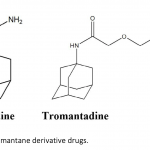
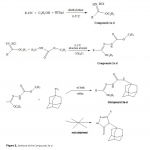
|
203 - 208 |
| New Record and Comparison of Some Morphometric Characters of an Endemic Species Capoeta pestai (Pietschmann, 1933) (Pisces: Cyprinidae) Populations in Central Anatolia Endemic species, Capoeta pestai (Pietschmann, 1933) is newly recorded from the İbrala Stream, Yeşildere location, in endorheic basin of the Central Anatolia. The known distribution of this species in Anatolia previously limited to the Lake Beyşehir and Eğirdir Basin systems and the river Melendiz in this area. The taxonomic characters of C. pestai population in the İbrala Stream was discussed with its other populations living in this endorheic basin. One-way analysis of variance (ANOVA) was applied to identify whether there were any statistically significant differences among the populations. Based on our results, there is a wide variation among the populations in terms of the number of scales on the line lateral, the number of 1st gill raker and some measurement taxonomic characters. In evaluating these findings, C. mauricii which described as a new species from Lake Beyşehir is the synonym to C. pestai. 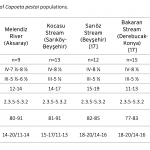
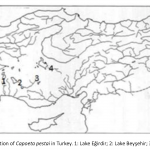
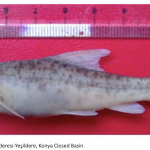
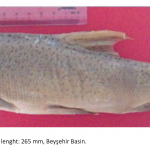
|
209 - 216 |
| Hydrothermal Synthesis of MIL-53 Catalyst for Liquid Phase Oxidation of Phenol For the removal of toxic organic phenol pollutants, to find a new alternative oxidation catalyst has been an important topic for a long time. Iron terephthalate (MIL-53) is an efficient catalyst for oxidation processes with high porosity and high surface area. In this study, MIL-53 was used for the oxidation of phenol. The catalyst was synthesized by hydrothermal method at 150°C for 2 h. It was structurally characterized by FT-IR and p-XRD. Thermal properties were also examined. The surface area was found as 152 m2/g with micropore areas. The liquid phase oxidation of phenol by hydrogen peroxide was performed on MIL-53. The reaction time, reaction temperature, catalyst amount and oxidant amount were also investigated. The phenol was removed with 91% conversion for 3 hours at 80°C. MIL-53 was enhanced as an alternative catalyst for liquid phase oxidation of phenol with high efficiency, selectivity, and conversion. 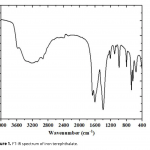
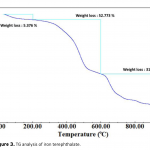
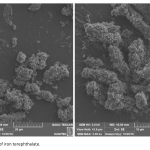
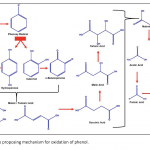
|
217 - 223 |